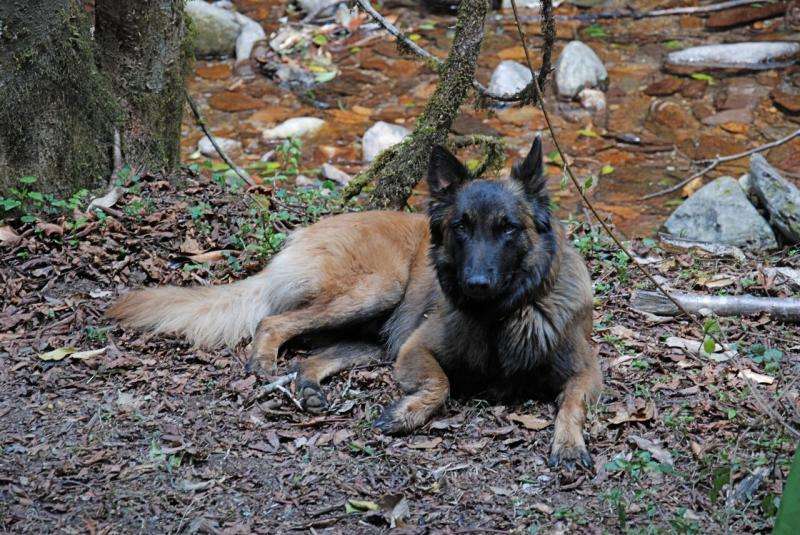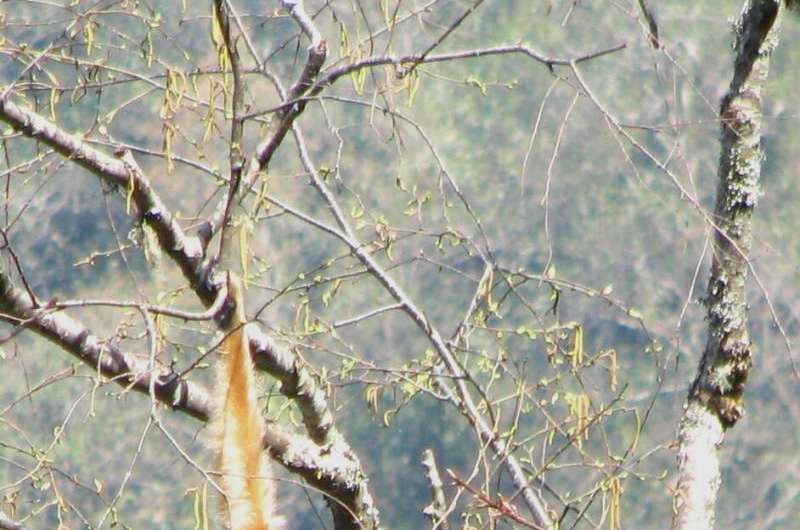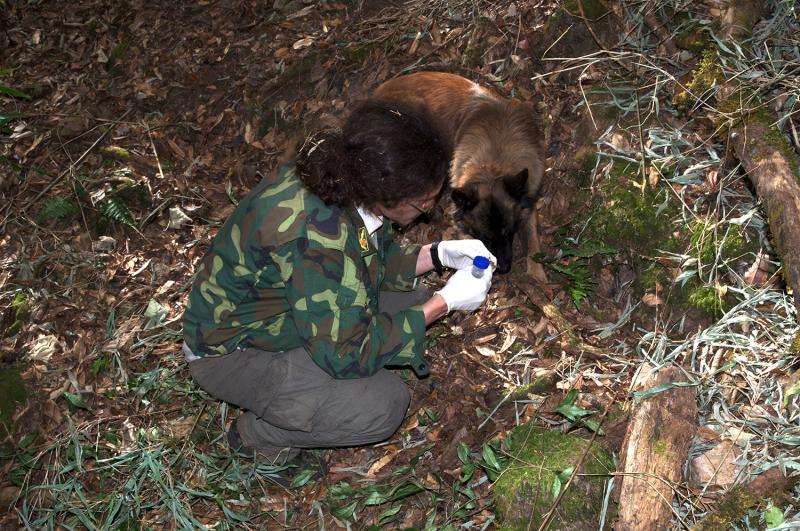Detection dogs sniff out the droppings of endangered primates

Detection dogs – working dogs trained to use their noses to find substances like drugs or explosives – have also found work in wildlife conservation. Such scat-detecting dogs are valuable tools for collecting fecal samples from rare and hard-to-find wild animals.
There are currently three major detection dog training groups based in the United States: Working Dogs for Conservation, Pack Leader, and the University of Washington Center for Conservation Biology. These groups are renowned for their ground-breaking and excellent work, but deploying detection dogs to other areas of the world is limited by the high cost (tens to hundreds of thousands of dollars) and logistical challenges of using a scat-detection dog team in the service of collaborative, international research.
Joseph Orkin, a biological anthropologist currently at the University of Calgary, became interested in the idea of using a scat-detection dog to track down the black-crested gibbons he was studying in southwest China. The apes live in mountaintop nature reserves and are wary of people, scurrying away quickly if one approaches.
"You can't just climb up a tree with a cheek swab kit and ask nicely for a DNA sample," Orkin says. "So we have people working in the field to collect fecal samples for population genetics analysis. But it can be tough: you're looking for this greenish-brown fecal sample on a brownish-green forest floor."

Orkin knew about the use of scat-detection dogs to sniff out fecal samples of endangered carnivores. But when he looked into what it would take to bring such a dog to China, the high cost and complicated logistics of transporting and housing the dog team made it impossible for his project's budget.
Instead, Orkin worked out a collaboration with local police in Kumming, China, to train a dog to locate scat. There was already a detection-dog training base in use for police work, and Orkin believed taking advantage of this infrastructure would eliminate the cost of international travel and handler fees. He and his colleagues reported the results of the project in a paper in Scientific Reports.
"For less than $3,000, we bought and trained a local police dog," says Orkin. "I spent a month working with a trainer, learning how to be a detection dog handler.
"Dogs' noses are so strong; it's like taking all the noses in a sold-out stadium and condensing them down into one nose. Just like a dog can discriminate among different types of drugs, it can discriminate among different types of feces."

Through an international collaboration between Washington University in St. Louis, the Chinese Academy of Sciences, and the Chinese Ministry of Public Security, Orkin was able to test the effectiveness of a locally trained detection dog to locate scat from three species of endangered primates.
The team trained a Belgian Malinois named Pinkerton to identify scat from black crested gibbons, Indochinese gray langurs, and stump-tailed macaques. With Orkin acting as his handler, they sampled 12 sites across two mountain ranges in Yunnan, China. When Pinkerton found a scat sample, he lay down with his front paws on either side of the sample and wagged his tail. He was rewarded with some time playing with his favorite toy, a tennis ball, while Orkin collected the sample.
The team collected 137 primate fecal samples that were then confirmed by genetic sequencing. Pinkerton had a 92% accuracy rate, significantly out-performing a human-only search team.
The results show that scat-detecting dogs can be applied to a broader range of wildlife.

"Although most of the detection dog work that has been published so far is focused on carnivores, we had success with scats from primates that eat fruits and leaves," says Orkin. "These primates are also arboreal, so instead of an animal leaving a nice, observable fecal pile on the ground, you have feces falling from the trees and breaking apart, making them difficult to see."
What Orkin is really excited about is the democratization of scat-detection dogs.
"By working with local police, you get more local capacity building and global reach," he says. "Most countries have access to detection dogs, so any scientist or conservation management group in most countries around the world should be able to do this. It's a powerful tool available to conservation groups and scientists around the world, and it expands the reach and scope of what we can do in conservation genetics."
Orkin worked with Pinkerton in China for about three years, and became very attached to him. Fortunately for both members of this dog detection team, Pinkerton is now retired and living with Orkin as a beloved pet. But the work they accomplished together shows the potential for locally sourced and trained detection dogs to be used to find scat to help international, collaborative conservation projects.
More information: Joseph D. Orkin et al. Cost-effective scat-detection dogs: unleashing a powerful new tool for international mammalian conservation biology, Scientific Reports (2016). DOI: 10.1038/srep34758
Journal information: Scientific Reports
Provided by Public Library of Science
This story is republished courtesy of PLOS Blogs: blogs.plos.org.


















